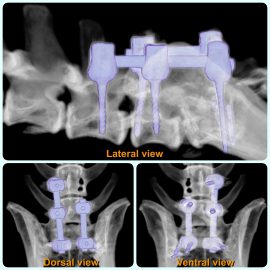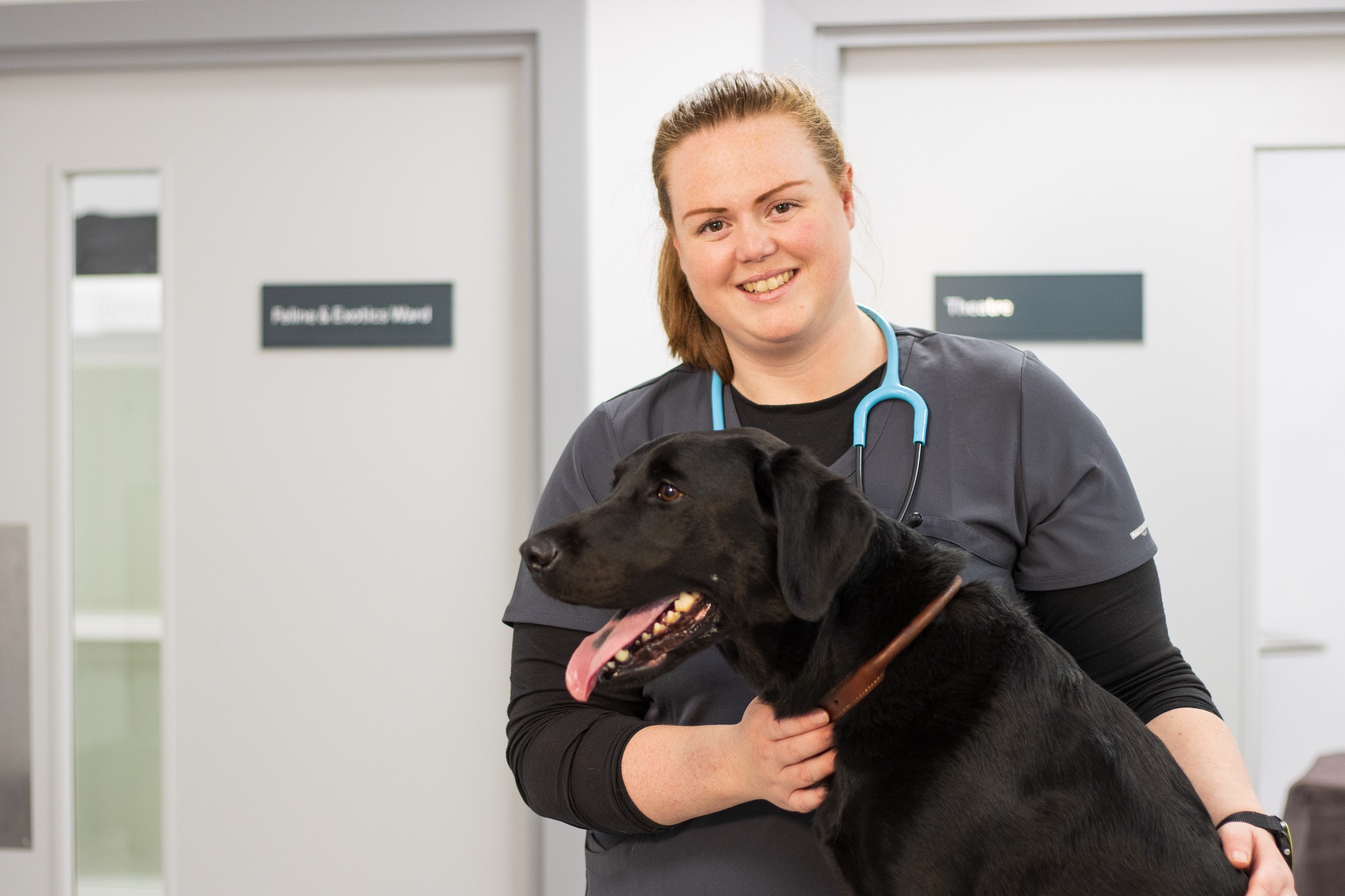Rottweiler given new lease of life following surgery to relieve compression on spinal nerves

CVS Group’s specialists at Chestergates Veterinary Specialists used Neuromed implants to relieve the compression
A Rottweiler has been saved from lameness and given another chance of an active life, following collaboration between CVS Neurology specialists and Neuromed the manufacturers of a pedicle screw implant.
Zedek had lameness on his right pelvic limb caused by a severe type of spinal stenosis, where the nerves in the lower back suddenly become severely compressed.
Vets at CVS Group’s Chestergates Veterinary Specialists diagnosed the issue using Magnetic Resonance Imaging (MRI), but were unable to improve the condition with only medical therapy.
Even complex surgery to relieve the compression of the cauda equina nerves with an implant failed, because of the significant stress caused by the movement of this large dog.
As a last chance for Zedek, CVS’ Chestergates orthopaedic and neurology specialists Dr Dave Thomson and Dr Anna Tauro opted to use Neuromed’s new polyaxial screw system[i], which combines strength and stability. The Neuromed team was able to recommend the correct implant size based on CT scans, and arranged a fast shipment.
Zedek undergone successful surgery to relieve the compression: the previous implant was removed and the new implant was placed, and it remains stable at the follow-up check.
Dr Tauro said:

“Zedek has been improving and is currently enjoying his life back home with his devoted owner. This was a very complex surgical challenge and we are very pleased we found the right solution. It was particularly helpful that Neuromed acted quickly and were able to discuss the exact specification of the implant for this dog.”

[i] The pedicle screw fixation device uses a unique, polyaxial system i.e. screws that have their heads (called tulips) that rotate at different angles (see images). The system allows the different screws to be linked together using rods and locking cap (see images), despite the screws being placed at different angles into the vertebral bones, which allows great versatility of this system.
